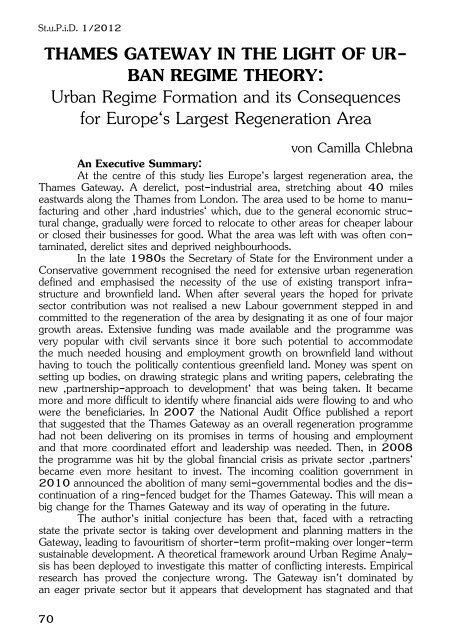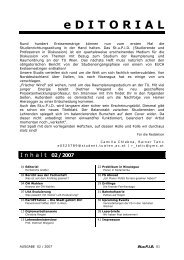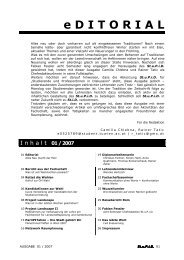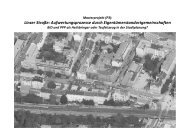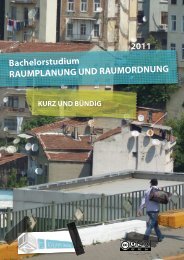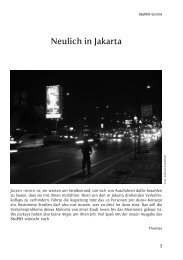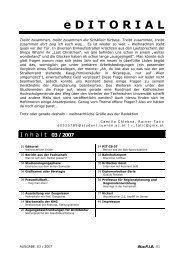Ausgabe 1 - Fachschaft Raumplanung
Ausgabe 1 - Fachschaft Raumplanung
Ausgabe 1 - Fachschaft Raumplanung
Erfolgreiche ePaper selbst erstellen
Machen Sie aus Ihren PDF Publikationen ein blätterbares Flipbook mit unserer einzigartigen Google optimierten e-Paper Software.
St.u.P.i.D. 1/2012<br />
THAMES GATEWAY IN THE LIGHT OF UR-<br />
BAN REGIME THEORY:<br />
Urban Regime Formation and its Consequences<br />
for Europe‘s Largest Regeneration Area<br />
von Camilla Chlebna<br />
An Executive Summary:<br />
At the centre of this study lies Europe‘s largest regeneration area, the<br />
Thames Gateway. A derelict, post-industrial area, stretching about 40 miles<br />
eastwards along the Thames from London. The area used to be home to manufacturing<br />
and other ‚hard industries‘ which, due to the general economic structural<br />
change, gradually were forced to relocate to other areas for cheaper labour<br />
or closed their businesses for good. What the area was left with was often contaminated,<br />
derelict sites and deprived neighbourhoods.<br />
In the late 1980s the Secretary of State for the Environment under a<br />
Conservative government recognised the need for extensive urban regeneration<br />
defined and emphasised the necessity of the use of existing transport infrastructure<br />
and brownfield land. When after several years the hoped for private<br />
sector contribution was not realised a new Labour government stepped in and<br />
committed to the regeneration of the area by designating it as one of four major<br />
growth areas. Extensive funding was made available and the programme was<br />
very popular with civil servants since it bore such potential to accommodate<br />
the much needed housing and employment growth on brownfield land without<br />
having to touch the politically contentious greenfield land. Money was spent on<br />
setting up bodies, on drawing strategic plans and writing papers, celebrating the<br />
new ‚partnership-approach to development‘ that was being taken. It became<br />
more and more difficult to identify where financial aids were flowing to and who<br />
were the beneficiaries. In 2007 the National Audit Office published a report<br />
that suggested that the Thames Gateway as an overall regeneration programme<br />
had not been delivering on its promises in terms of housing and employment<br />
and that more coordinated effort and leadership was needed. Then, in 2008<br />
the programme was hit by the global financial crisis as private sector ‚partners‘<br />
became even more hesitant to invest. The incoming coalition government in<br />
2010 announced the abolition of many semi-governmental bodies and the discontinuation<br />
of a ring-fenced budget for the Thames Gateway. This will mean a<br />
big change for the Thames Gateway and its way of operating in the future.<br />
The author‘s initial conjecture has been that, faced with a retracting<br />
state the private sector is taking over development and planning matters in the<br />
Gateway, leading to favouritism of shorter-term profit-making over longer-term<br />
sustainable development. A theoretical framework around Urban Regime Analysis<br />
has been deployed to investigate this matter of conflicting interests. Empirical<br />
research has proved the conjecture wrong. The Gateway isn‘t dominated by<br />
an eager private sector but it appears that development has stagnated and that<br />
70


